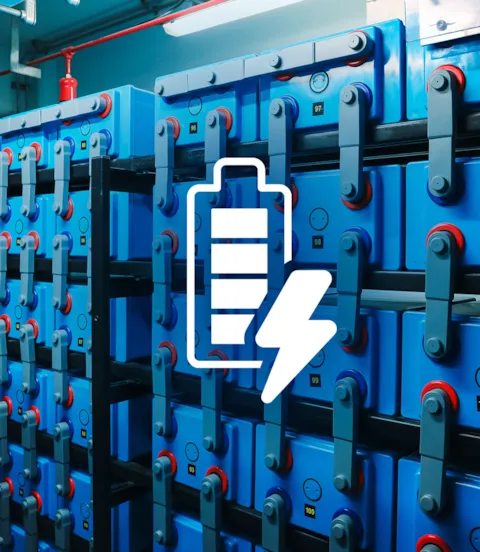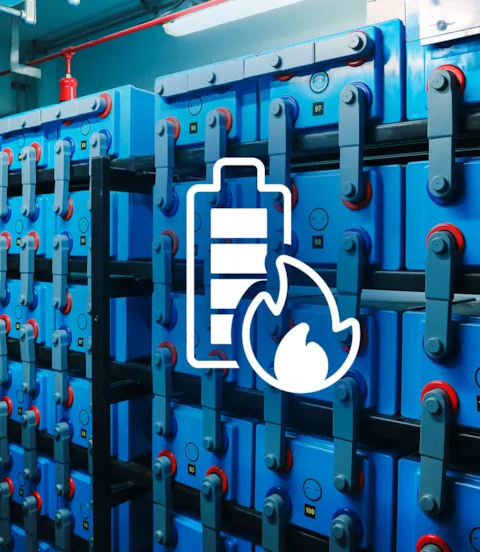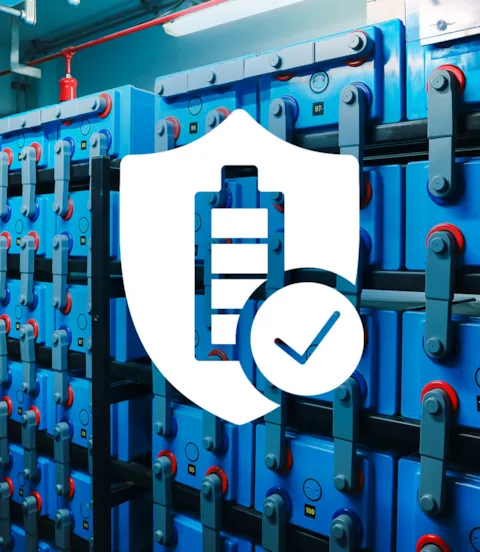Building battery confidence: Project unites stakeholders around battery fire facts
Addressing the need for shared understanding of marine battery fire risk, key industry stakeholders joined forces in a DNV GL-led joint development project (JDP) on managing explosion and fire risks related to lithium-ion maritime battery systems.
“This project invited players from the entire value chain to examine relevant safety aspects of marine batteries,” says Henrik Helgesen, Project Manager of the JDP and Senior Consultant at DNV GL. “It was the ideal setting to develop common guidelines and build trust in the community, and to promote the adoption of batteries on vessels.”
Concluded in late 2019, the project involved the Norwegian, Danish and US maritime authorities, battery manufacturers, system integrators, suppliers of fire extinguishing systems, shipyards and shipowners.

Establishing a fact basis for fires in battery installations
Citing the project as “unique”, Denis Cederholm-Larsen, senior ship surveyor at the Danish Maritime Authority, stated: “This project allowed us to work closely with all parts of the industry, and the laboratory tests gave us an even more accurate depiction of what can be expected in case of fire in a battery installation.”
Kolbjørn Berge of the Norwegian Maritime Authority, a founding partner in the project, emphasizes the need for accord on this critical issue: “We could see that there were too many variations of the truth circulating. We wanted to establish a basis of facts that all stakeholders could agree on.”

Better battery understanding
Among other factors critical to battery safety, the project examined what happens when lithium-ion battery cells are overheated to the point of failure, so-called thermal runaway, and evaluated several common methods of minimizing harm from these events. One main conclusion was that ventilation alone is not enough to prevent an explosion if a large number of battery modules, 4,000 amp hours or more, fail in the same compartment at once.
Notably, the project created a risk model allowing component failure numbers to be used in identifying the most important safety barriers needed in an installation. “In addition to fire suppression and ventilation, the battery design must have preventative safety barriers to limit fire and gas emissions to as small a part of the battery system as possible,” Helgesen reports.

Fire suppression systems with varying benefits
Tested fire suppression systems were found to provide different benefits, each with various strengths and drawbacks, but no “silver bullet” solution was identified. “Each battery installation will require assessment of necessary barriers in consultation with the battery manufacturer in order to identify the application most suited for that project,” Helgesen says. “Due to the limited amount of available suppression media on board a vessel, the actual volumes and release rates will need to be calculated depending on the battery system.”
Another important project deliverable was the proposed model for quantitative risk assessment for battery systems. “Nothing is risk-free. The probability of a battery fire seems to be less than in conventional engine rooms, but we have not been able to compare the severities of these fires,” Helgesen relates. “More and better data is necessary to fully evaluate if a battery system is safer than a conventional combustion engine, and why.”

Strengthening battery safety through cooperation
Sverre Eriksen, Senior Principal Engineer, Electrical Systems at DNV GL, notes that class societies can use project results to upgrade their own offerings: “This project has strengthened our verification of the safety principles in class rules. The findings should enable us to provide even better prescriptive guidelines and clearer rules. Now I look forward to larger-scale fire extinguishing tests, to follow up and provide more answers to the questions generated during the project.”
He emphasizes the focus on safety as a key project premise: “We do not compete on safety. All stakeholders in the value chain were represented in the project, including the authorities, and open communication has been at the heart of the cooperation. This is proof that industrial players can work together to improve safety for assets, crew and passengers.”
Denis Cederholm-Larsen concurs: “All participants had the same goal of highlighting safety issues relating to maritime batteries.” Objectivity was essential as well, he says. “Many suppliers were represented, but the report did not favour one over another. Mutual openness and trust is the key. That was the real core and soul of the project.”
Project partner Michael Carter, Acting Associate Administrator for Environment and Compliance at the US Department of Transportation, Maritime Administration, adds: “This is an important step in furthering international efforts to improve battery safety for maritime propulsion applications and we look forward to continuing our support of work to advance safety in maritime energy innovation.”

Upholding the green mandate
“We have to keep class rules up to speed with the developments as they come faster and faster, and we need to support green solutions,” says Kolbjørn Berge. He notes that IMO and the Norwegian government, among others, have presented shipping with demanding environmental goals: “We have been asked to find new solutions and explore new technologies, and to prepare for environmental demands coming in 2030 and 2050.” In order to achieve these goals, he believes that stakeholders will have to look beyond existing rules and keep updated on developments and challenges.
“We have an opportunity to establish a new standard, but we have to get that standard right in order to make sure that safety is ensured,” Berge concludes. “We can’t hide in a corner when problems arise. This is the reason for projects of this kind, to ensure that we have control of the facts. If you don’t have that, facts have a way of coming back to cause problems.”

Sverre Eriksen
Principal Engineer
- Nutthapat Matphongtavorn – Shutterstock.com